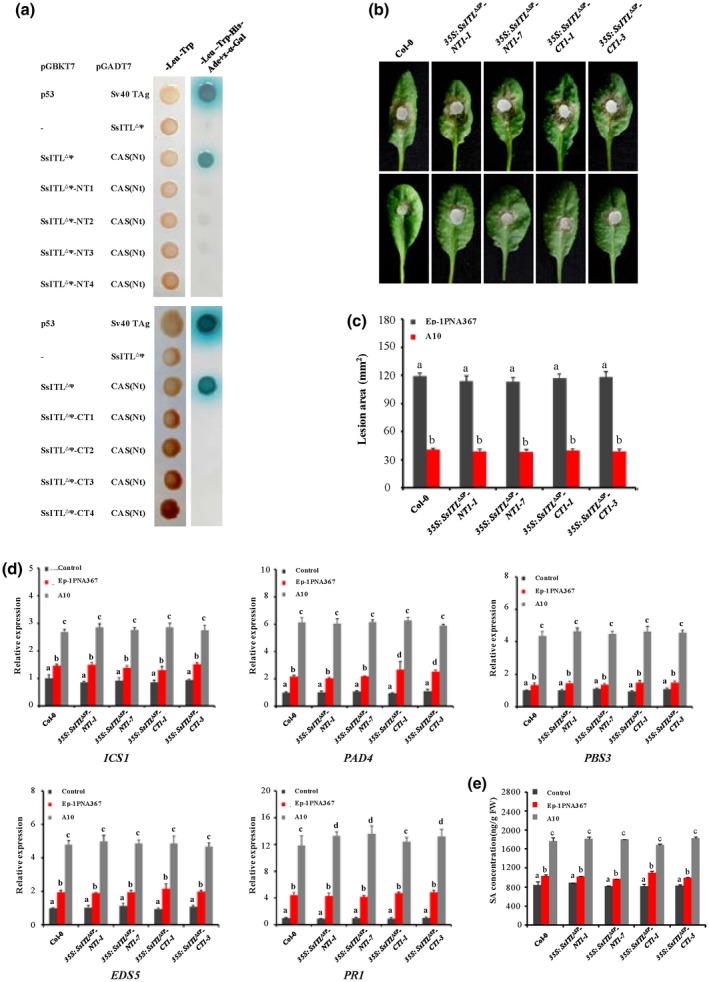Figure 5.

Truncated SsITLs have no effect on plant resistance to Sclerotinia sclerotiorum. (a) Yeast two‐hybrid (Y2H) assay showed that truncated SsITLs (SsITL∆SP‐NT and SsITL∆SP‐CT) cannot interact with CAS. The truncated SsITLs were introduced to the pGBKT7 vector and then were co‐transformed with pGADT7‐CAS(Nt) to the yeast Y2H Gold strain. Co‐expression of pGBKT7‐p53 and pGADT7‐SV40 TAg were used as positive controls. –, corresponding empty vectors. The plates were photographed 4 days after inoculation and experiments were repeated three times. (b) The wild‐type plant Arabidopsis thaliana Col‐0 and truncated SsITL transgenic plants were challenged with S. sclerotiorum strains Ep‐1PNA367 (top) or A10 (bottom). Photographs were taken at 36 hours post‐inoculation (hpi). Values are means ± SE. (c) Statistical analysis of leaf lesion area induced by Ep‐1PNA367 or A10 at 36 hpi. Values are means ± SE. (d) Relative expression levels of the salicylic acid (SA) signalling pathway‐related genes (ICS1, PAD4, PBS3, EDS5, and PR1) in each plant were analysed at 12 hpi. The expression levels of GAPDH were used to normalize the expression levels of these genes in different plants. The expression level in the wild‐type plant Col‐0 without inoculation was set to 1. Values are means ± SD. (e) SA concentration in each plant was measured at 12 hpi. The wild‐type plant Col‐0 without inoculation was used as control. In all experiments, three independent replicates were performed. Values are means ± SE. Different letters on the same graph indicate statistical significance (one‐way analysis of variance; post hoc = Duncan α [0.05])
